For me this was an experimental photography technique for birds in flight. I’ll definitely be using it again.
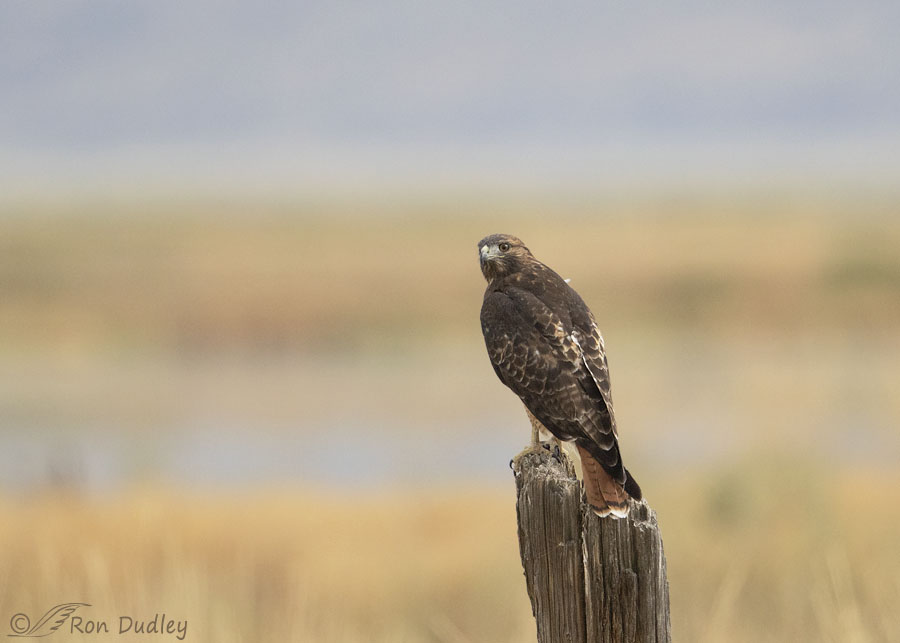
1/4000, f/5.6, ISO 800, Canon 7D Mark II, Canon EF 500mm f/4L IS II USM + EF 1.4 III Extender, not baited, set up or called in
Yesterday morning at Bear River MBR this adult Red-tailed Hawk was perched with “his” back to me and looking a little nervous. He was too far away for quality photos while perched but if he took off and filled more of the frame with his wings I thought I had a small chance for decent flight shots. I say “small” chance because he was facing away from me so I figured he’d take off in that direction. I already have more butt shots than I’ll ever need so to be honest the main reason I trained my lens on him was to confirm the ID and age and to see if there was anything unusual about him.
Then on a whim I decided to try an experiment. For flight shots I nearly always use a single active focus point at the center of the frame. I’m “in the habit,” I’m used to it and pretty good at it so that’s just what I do. But it’s always very difficult to keep a single focus point on an erratic bird in flight and I often lose focus on my subject so this time I decided to activate 15 focus points and see what happened. Since the bird was probably going to take off away from me I wouldn’t be out anything if it didn’t work and I’d still get to try my experiment.
But the hawk surprised me by turning to his right on the perch to take off (perhaps there was a breeze from that direction) and I didn’t have time to switch back to one active focus point so I just went with the flow to see what I would get.
The following nine photos are sequential except for three I omitted because his face was hidden by a wing or he was too close to the bottom of the frame. Lets see how successful I was at keeping the hawk in focus for that long with 15 points activated.
Keep in mind I wasn’t close to the bird. To give you some perspective on the distance each of the last 8 photos in the series was cropped to exactly 40% of the original image (8MP out of 20MP).
Ok, I’ll stop jabbering so much. Lets get on with it.
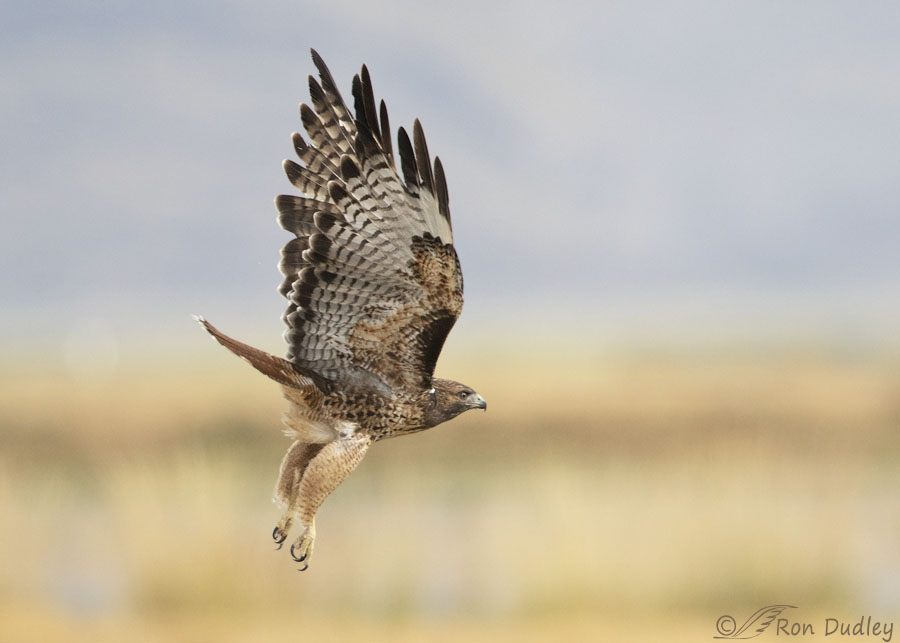
1/3200, f/5.6, ISO 800, Canon 7D Mark II, Canon EF 500mm f/4L IS II USM + EF 1.4 III Extender, not baited, set up or called in
I left out the two takeoff shots because in both of them his right wing covered his face so this is the first photo in the flight series.
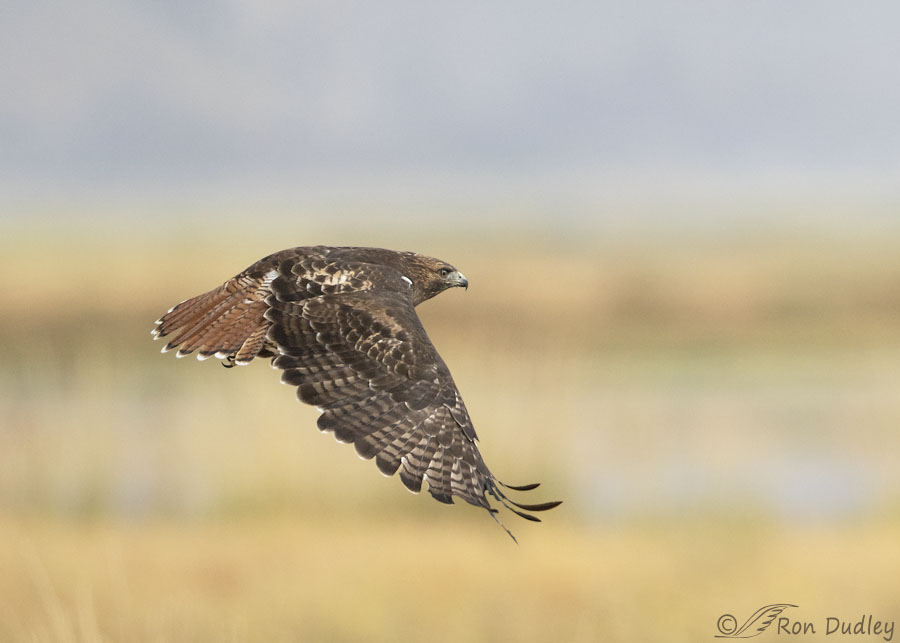
1/3200, f/5.6, ISO 800, Canon 7D Mark II, Canon EF 500mm f/4L IS II USM + EF 1.4 III Extender, not baited, set up or called in
My burst rate seemed to be fairly well timed with his flapping speed so I was lucky to mostly get wing-up or wing-down postures (instead of horizontal wing positions).
1/4000, f/5.6, ISO 800, Canon 7D Mark II, Canon EF 500mm f/4L IS II USM + EF 1.4 III Extender, not baited, set up or called in
In a flight series like this I always notice how the legs and feet are gradually tucked up against the tail as the hawk gains airspeed.
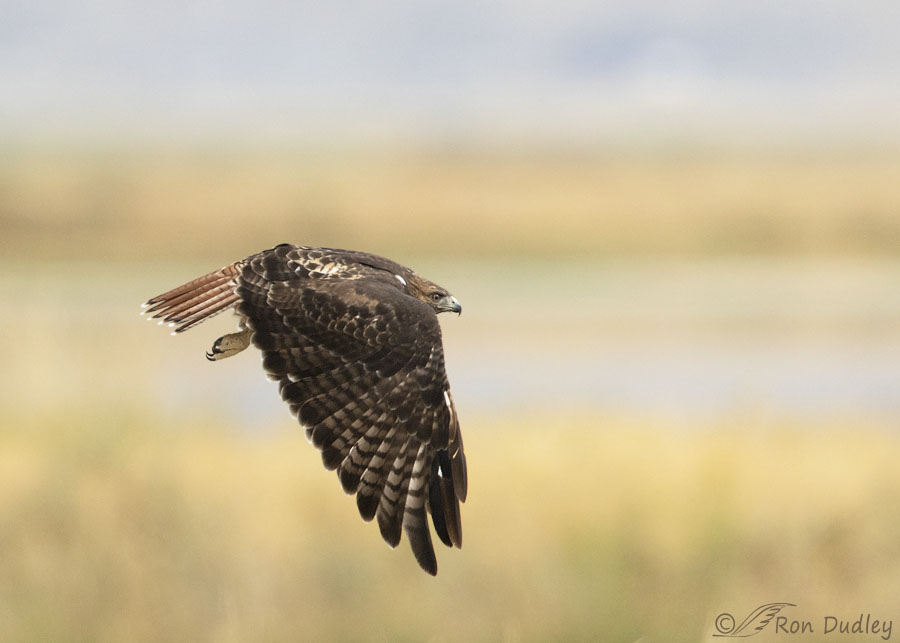
1/4000, f/5.6, ISO 800, Canon 7D Mark II, Canon EF 500mm f/4L IS II USM + EF 1.4 III Extender, not baited, set up or called in
I almost lost his face behind his wing again but this peekaboo pose works well enough for me.
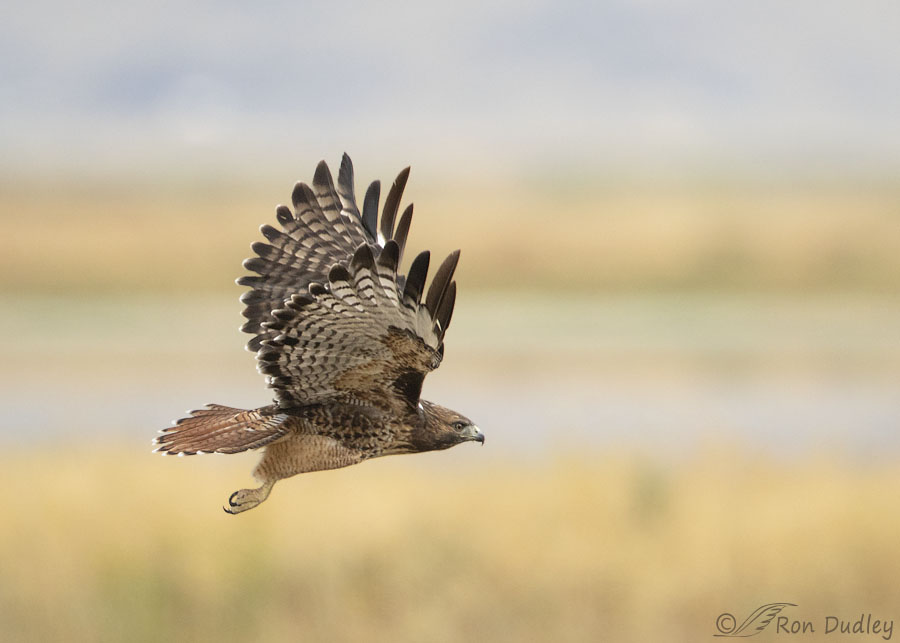
1/3200, f/5.6, ISO 800, Canon 7D Mark II, Canon EF 500mm f/4L IS II USM + EF 1.4 III Extender, not baited, set up or called in
By now I’m sure you’ve noticed the errant white feather on his shoulder. That feather is apparent throughout the series.
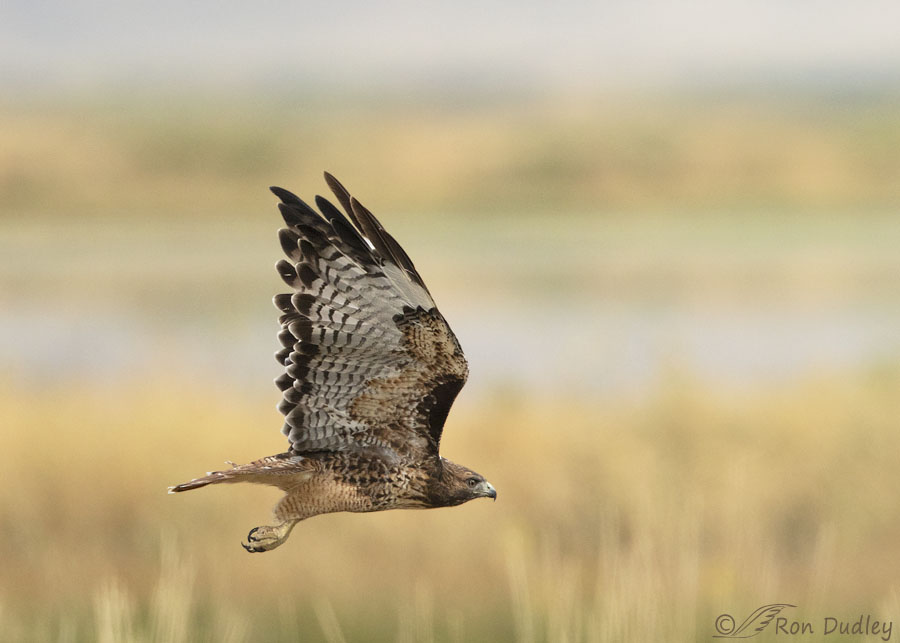
1/4000, f/5.6, ISO 800, Canon 7D Mark II, Canon EF 500mm f/4L IS II USM + EF 1.4 III Extender, not baited, set up or called in
I was surprised that this shot in particular is as sharp as it is because this is all the room I had at the bottom of the original frame. But somehow one of the 15 active focus points remained locked on the bird this far away from the center of the frame.
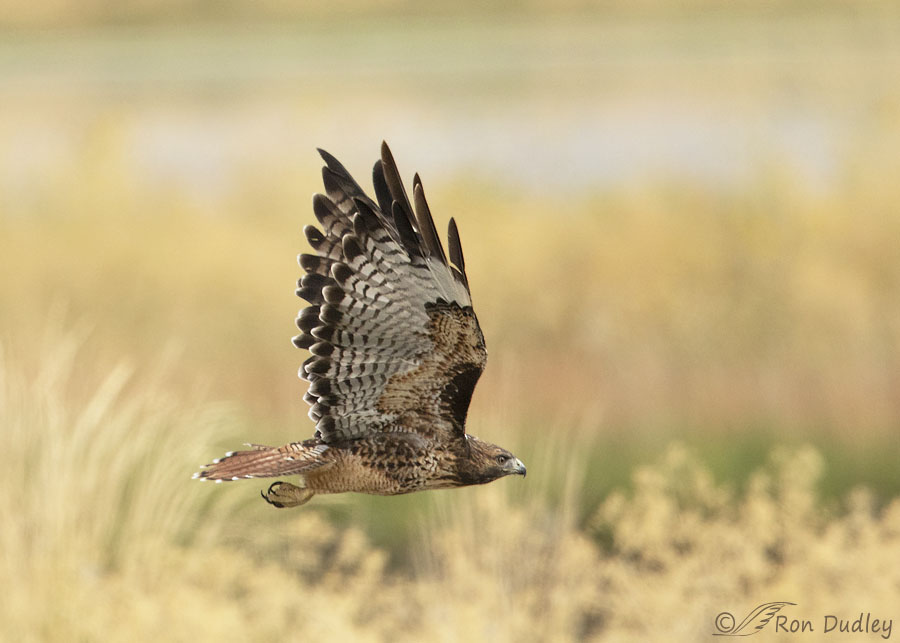
1/3200, f/5.6, ISO 800, Canon 7D Mark II, Canon EF 500mm f/4L IS II USM + EF 1.4 III Extender, not baited, set up or called in
By now his feet are almost completely tucked up against his tail. Quite a contrast to the first flight shot.
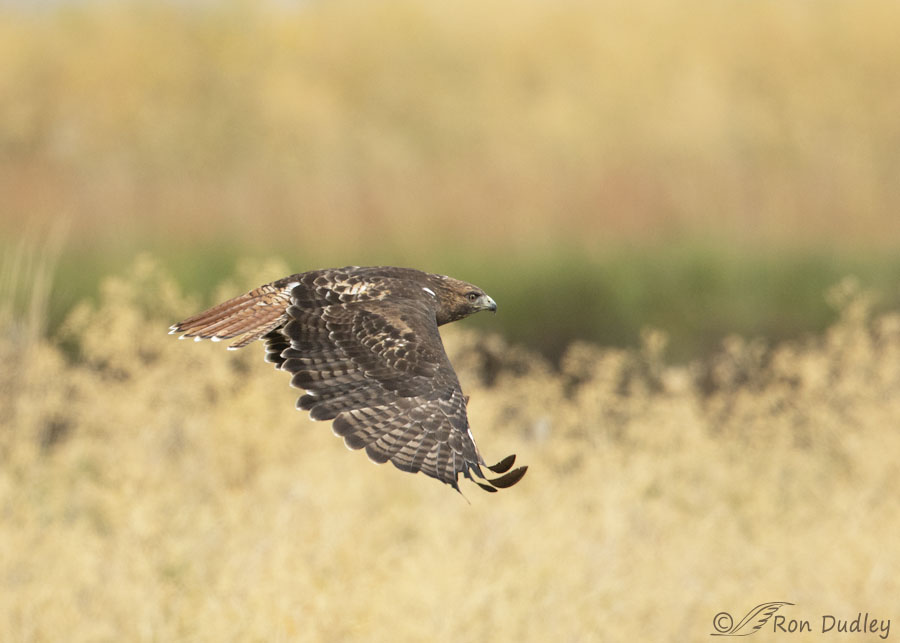
1/2500, f/5.6, ISO 800, Canon 7D Mark II, Canon EF 500mm f/4L IS II USM + EF 1.4 III Extender, not baited, set up or called in
I like the curled primaries.
1/2500, f/5.6, ISO 800, Canon 7D Mark II, Canon EF 500mm f/4L IS II USM + EF 1.4 III Extender, not baited, set up or called in
The last photo in the flight series.
I was pleasantly surprised to get this many shots in the series as sharp as they are. I know I wouldn’t have done nearly as well with only a single focus point active or even five of them. Because I was so far from the bird there isn’t a lot of detail but the bird is sharp or sharp enough in every frame (including most of the shots I left out of the series).
One of the reasons 15 active points worked as well as it did was because the background wasn’t close to the bird. If the background had been close one of the focus points would probably have locked on to something else back there and my camera wouldn’t have been able to recover in time. Contrast between bird and background was key to my success.
When the background isn’t close to the bird I’ll definitely be using this technique again. Many other bird photographers have probably been using it for years but my tendency to be a creature of habit kept me in my rut.
Next time I just hope I’ll be closer to the bird.
Ron
Addendum:
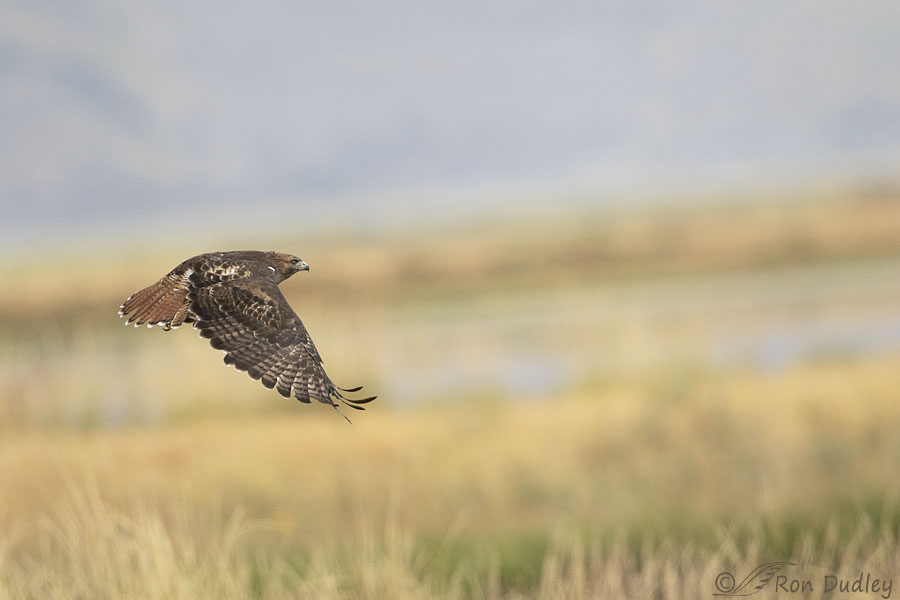
To give readers a better sense of how far away I was from the hawk and how much these photos have been cropped here’s an uncropped version of the third image in this post. Yes, my camera was tilted (I was shooting from my pickup window) so I had to rotate many of these shots during processing.


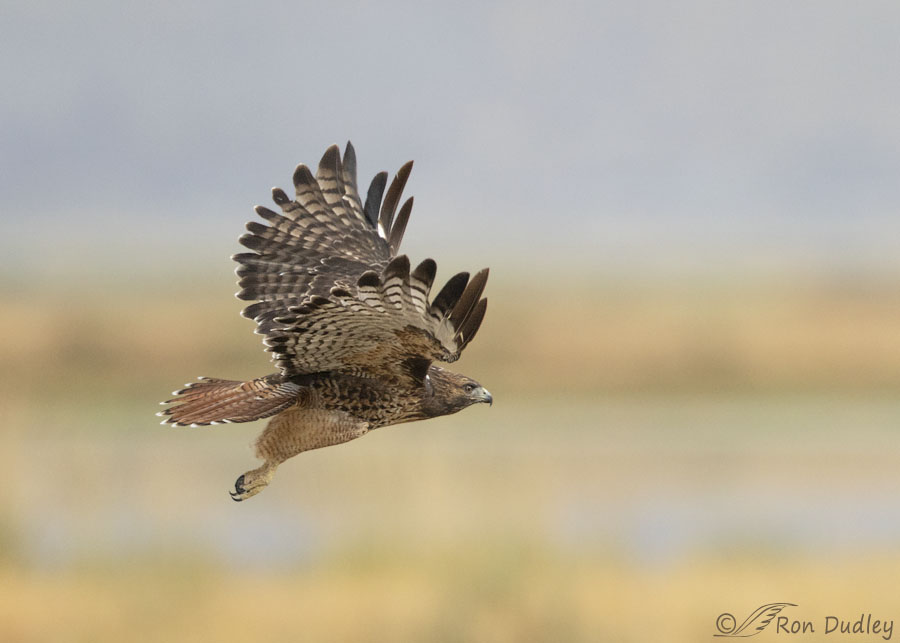
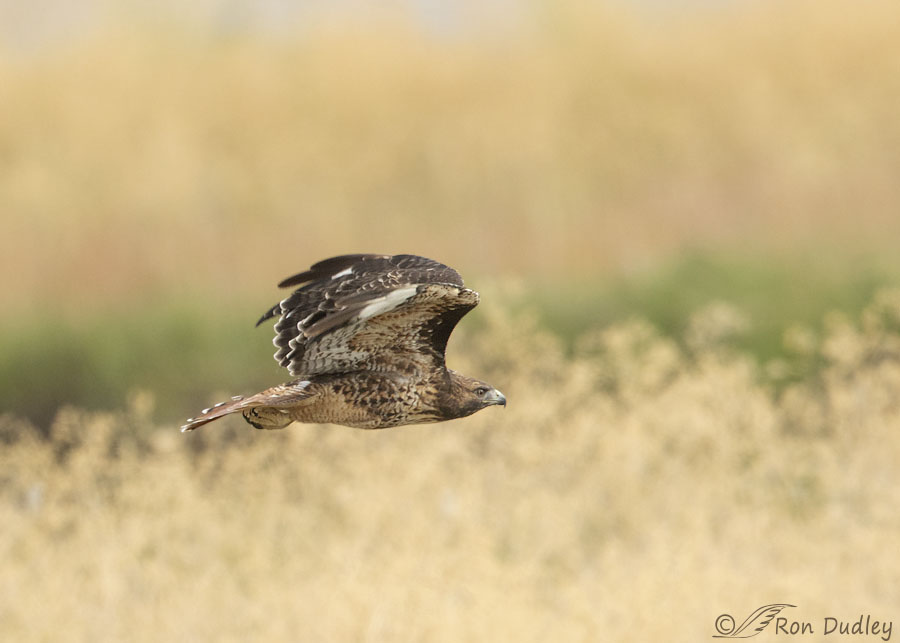
Yikes, I didn’t see this yesterday (gone all day) — what a loss that would be if I told myself I just didn’t have time to go back and look! Which I almost did…but red-tails…
Incredible images, Ron — really special flight series, you can feel *her* power!
Ron,
Nice series! What is the name of the software that you use on your computer to determine which focus points were activating for a particular photo? Thanks, John
I think it’s called Digital Photo Professional. It came with one of my Canon cameras.
Great shots-he looks so majestic!
I wanted to pluck that feather! Great series. I love these where I get a sense of the motion.
I usually only use one active point also. When I have used more focus points, often my camera will try to lock onto something else and it looses focus and has to recover missing the action shot I wanted.
April, most of the time I’ll continue to use a single active focus point too. But whenever it looks like I’ll have a background far away from the bird I’m sure going to try this technique more often until I’m convinced, one way or the other.
Great series Ron. Is the curl in the primaries due to the air resistance from the downward motion of the wing or is it controlled by the hawk. I can understand how aircraft maneuver but the ability for aerial maneuvers that birds possess constantly amazes me. Specifics illustrated by your photography only show me how intricate they are. Thanks for sharing.
Thank you, Bill. It’s the downward motion that caused it.
Ron, such a great series of shots of this spectacular looking bird. The background is perfect. Thanks for sharing
Thank you, Alice.
Wow, wow and wow.
And britches.
Wow again.
Go 15 point focus!
I figured you’d notice those pantaloons, EC.
So I read a few explanations of autofocus points and am more clueless than before. However, if it results in photos like these then I’m all for it.
Lyle, we don’t need to understand it. We just need to know what buttons to push… and when. ::
Real nice series! I appreciate these photo lessons – I learn so much. Thanks!
Thank you, Joanne.
Great series Ron. I’m impressed that he(she) took to your right and not away from you considering it’s perched position. Regarding single vs multiple focus points for flight, I am just not good enough to even into the single point option. Just too hard for me to keep the point on the subject. Some do, and if your successful with it, your tracking skills are superb, great series here and once again for sharing.
I was surprised by his direction of takeoff too, Frank. Especially since he appeared nervous about my pickup, even though I was far away.
Believe me, single point is difficult for me too. But then flight shots are always challenging.
Thanks for the detail of how you shot this. I usually use 5 points when I know I’m going to shoot a bird in flight, and don’t track well enough to get more than a few shots. I might well do better with more focus points. These are nice.
Nancy, I used to use five points but I switched to one some years ago. But it does make it more difficult to keep locked onto the bird.
I REALLY LIKED THIS SERIES ! The fact that the landscape is a series of soft, plain horizontal bands really accentuated the focus on the beautiful bird……if the landscape
had been a series of rolling forms, I think that visually they would have functioned as an “out-of-focus” distraction, but the plain “planes” are a perfect foil to a dynamic central form–loved it !
That’s a background we often get at Bear River, Kris. I just wish there were more birds out there.
I’m fostering and mom dog had a rough night, so I had a rough night. Puppies slept though everything, as usual. Hoping for a nap this afternoon.
Whoops! That was supposed to be a reply to your reply. Boy! I DO need a nap.
Whatever the reason you were up pretty early Cal time.
Damn, these shots are fantastic: envy,envy,envy!! We have a “resident” Red-tail in the winter, but whenever he/she allows me a chance to take its picture, either there are branches in the way or just as I get the lens on him/her it moves in an opposite direction. Huge frustration!
As much as I love your images, and I love Red-tails, for me getting closer than hundreds of feet, more like hundred of yards away is so far, terribly difficult. So, I will have to be content to dwell in your expertise and beautiful images.
Many thanks for sharing.
Dick, you just never know about birds. Every once in a while you find one that’s unusually approachable.
I actually did another experiment about that yesterday with huge flocks of swallows on the road in front of me. It would take too long to explain well here but a few individual birds are far more approachable than all the others.
P.S. Melissa Groo has a good article – “Rolling Blind” – in Sept. Outdoor Photographer regarding shooting from a vehicle…….
I’ve actually shot with Melissa from my pickup. A few years ago she asked me to show her the bird areas around here so we spent the day together, including giving each other shooting tips.
YES! Beautiful bird and beautiful consistent shots of “him”! Good point on how close the background is/isn’t when using multiple focus points – I’ve run into that and it is FRUSTRATING resulting in “blue air” at times…..
Beautiful bird and beautiful consistent shots of “him”! Good point on how close the background is/isn’t when using multiple focus points – I’ve run into that and it is FRUSTRATING resulting in “blue air” at times….. 
That distance to background makes a big difference in situations like this, Judy.
These are spectacular!!! 15 points or bust! He’s a real beauty — I wonder if he’s related to the rufous female. I feel like I’m there with you in this series. Wowzers! Plus, PANTALOONS!
He’s a real beauty — I wonder if he’s related to the rufous female. I feel like I’m there with you in this series. Wowzers! Plus, PANTALOONS! 
Thank you, Marty. He was quite far away from where the rufous female hangs out.
Wow, you’re up early this morning…